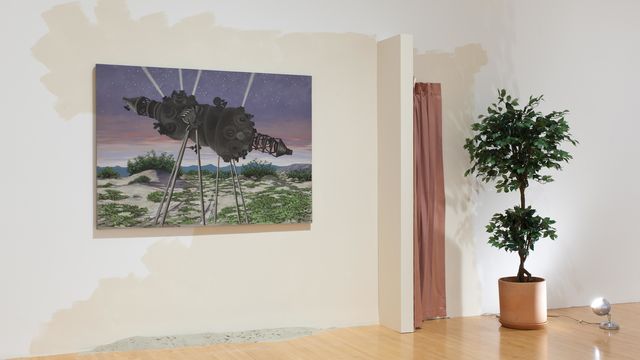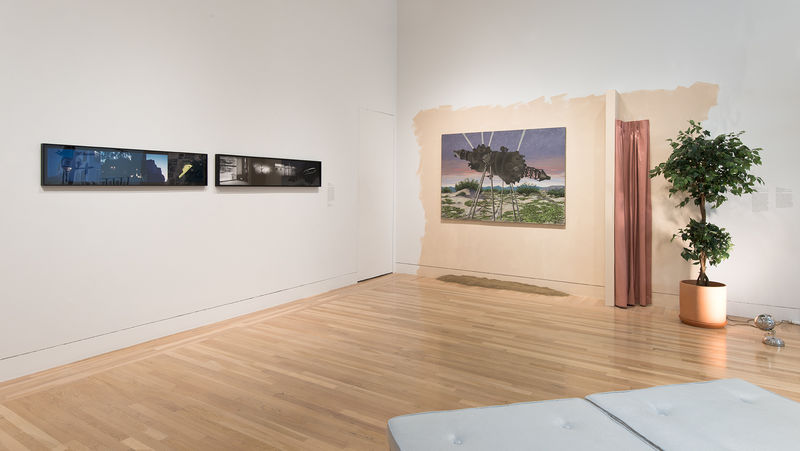
William Leavitt
Enamored of the artifice of Hollywood sets, William Leavitt has used the tricks and tropes of professional set design and the visual language of cinema to look at how context, objects, and editing influence our understanding of narrative. Translated into an art context, Leavitt's use of conventions drawn from cinema and theater provokes questions about the differences between art and artifice. Like the boundaries between the city and the desert in the Los Angeles basin, the line between the real and the imagined, backstage and onstage, in Leavitt's work is abrupt in some places and blurry in others. Made with raw construction materials, various found domestic objects, and paintings made by the artist, Leavitt's works recall the generic sets of daytime dramas. In Planetarium Projector (1987), a spur wall divides the composition into two areas, "outside" and "inside." On the left, the "outside" is signified by a painting of a planetarium projector in a desert landscape and a shallow pile of sand on the floor, and on the right, "inside" is represented by a curtain, a potted ficus tree, and a lamp. The spatial division is clearly articulated, but our sense of what constitutes "outside" and "inside" is sketchy at best, dislocated by details like the incompleteness of the yellow paint on the wall and the strangeness of the projector shooting its images of stars back out into the universe.

—Corinna Peipon


